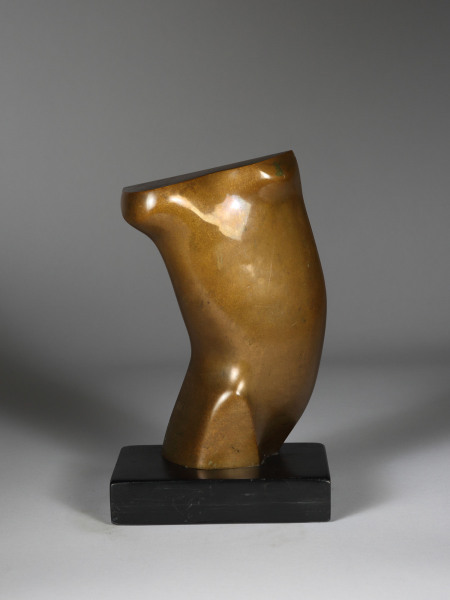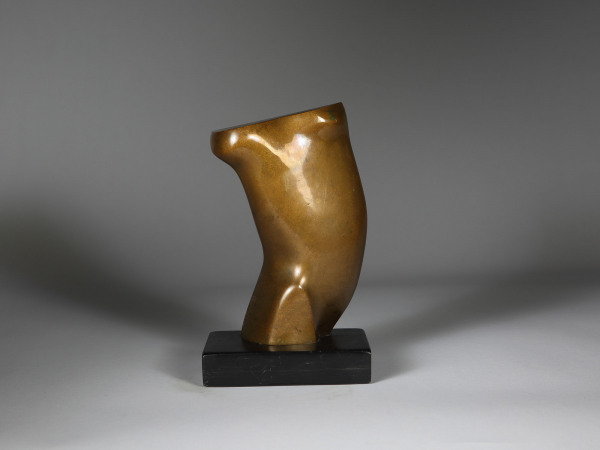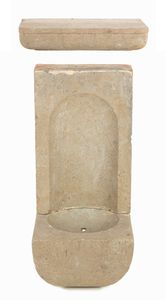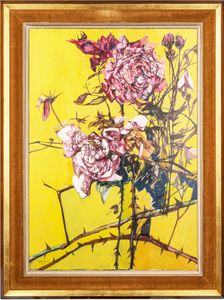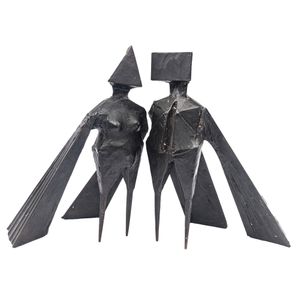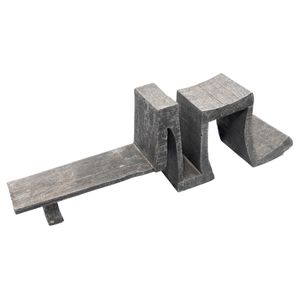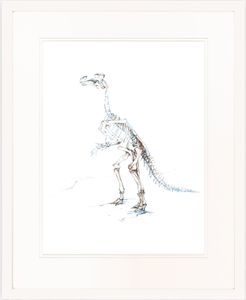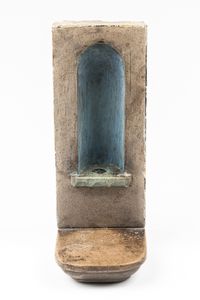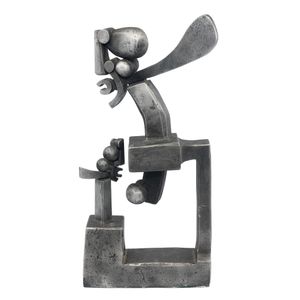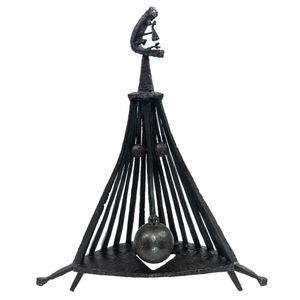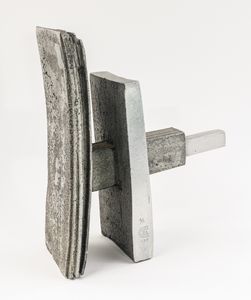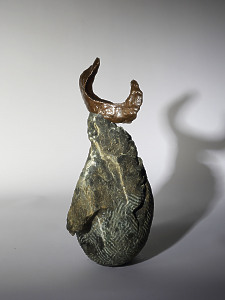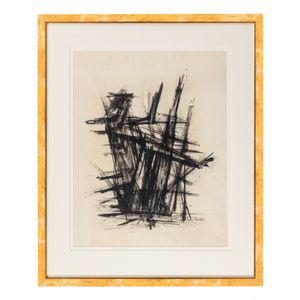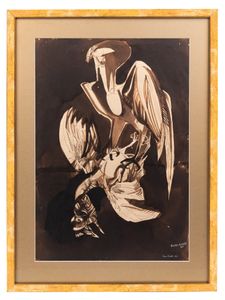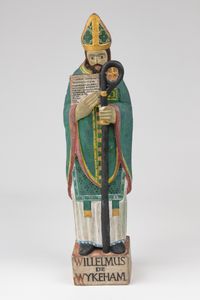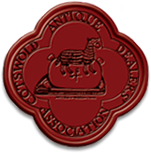'Twisting Torso 'John Skelton MBE 1923 – 1999
'Twisting Torso 'John Skelton MBE 1923 – 1999
1970
Height
18.50cm
[7.28 inches]
Width 11.00cm [4.33 inches]
Depth 5.00cm [1.97 inches]
Width 11.00cm [4.33 inches]
Depth 5.00cm [1.97 inches]
Sold
Artist's Resale Right applies at 4%
Bronze on Slate Base
Inscribed in the Base
Date 1970
John Skelton 72 1/10
Provenance
Collection Edward James of West Dean
Exhibited
21st Anniversary Exhibition June 10 – August 12, 1979 – Another Cast
John Skelton MBE 1923 – 1999
John Skelton was born in Glasgow, his mother the
youngest sister of Eric Gill and model for Gill’s largest
nude sculpture ‘Mankind’. Skelton himself, after a year
at Coventry School of Art, was apprenticed in 1940 to
his uncle at Pigotts Farm just four months before Gill’s
death. Skelton continued his traditional training under
Gill’s longstanding first assistant Joseph Cribb at Ditchling
until the War called in 1942. Skelton served with the
Royal Artillery in India and the Far East, returning in
1947 to work at Bridgeman’s Monumental Mason’s yard
in Lewes before setting up his own workshop in 1950 at
Burgess Hill, East Sussex, working as a master mason and
letter-cutter. │ Exhibiting at the Royal Academy from
1953, Skelton took his traditional training and ap plied his
skill set to modern, abstracted work regarding ‘carving
as drawing with tools’. The human form, particularly the
torso, was an underlying theme of his figurative work in
various materials, as here with this bronze. │ Selected
works include; the Headstone for Edward James at
West Dean (the original owner of this work, James
giving it to his gardener on retirement), a sculpture ‘Our
Lady of Pity’ Norwich Cathedral 1967, and for St Paul’s
Cathedral in 1979 he carved plaques commemorating
the ten Allied Field Marshals, the Ivor Novello Memorial
and in Poets’ Corner, a memorial to John Clare – it is
said that there are more inscriptions cut by Skelton’s
hand in St Paul’s than by any other mason. He was Vice-
President of the Royal Society of British Sculptors and
a Master of The Art Workers’ Guild. Fittingly, Skelton
designed, for the British Medal Society in 1975, the Eric
Gill commemorative medal, also working with Dr Judith
Collins in 1998 to prepare Gill’s Catalogue Raisonné.
Bronze on Slate Base
Inscribed in the Base
Date 1970
John Skelton 72 1/10
Provenance
Collection Edward James of West Dean
Exhibited
21st Anniversary Exhibition June 10 – August 12, 1979 – Another Cast
John Skelton MBE 1923 – 1999
John Skelton was born in Glasgow, his mother the
youngest sister of Eric Gill and model for Gill’s largest
nude sculpture ‘Mankind’. Skelton himself, after a year
at Coventry School of Art, was apprenticed in 1940 to
his uncle at Pigotts Farm just four months before Gill’s
death. Skelton continued his traditional training under
Gill’s longstanding first assistant Joseph Cribb at Ditchling
until the War called in 1942. Skelton served with the
Royal Artillery in India and the Far East, returning in
1947 to work at Bridgeman’s Monumental Mason’s yard
in Lewes before setting up his own workshop in 1950 at
Burgess Hill, East Sussex, working as a master mason and
letter-cutter. │ Exhibiting at the Royal Academy from
1953, Skelton took his traditional training and ap plied his
skill set to modern, abstracted work regarding ‘carving
as drawing with tools’. The human form, particularly the
torso, was an underlying theme of his figurative work in
various materials, as here with this bronze. │ Selected
works include; the Headstone for Edward James at
West Dean (the original owner of this work, James
giving it to his gardener on retirement), a sculpture ‘Our
Lady of Pity’ Norwich Cathedral 1967, and for St Paul’s
Cathedral in 1979 he carved plaques commemorating
the ten Allied Field Marshals, the Ivor Novello Memorial
and in Poets’ Corner, a memorial to John Clare – it is
said that there are more inscriptions cut by Skelton’s
hand in St Paul’s than by any other mason. He was Vice-
President of the Royal Society of British Sculptors and
a Master of The Art Workers’ Guild. Fittingly, Skelton
designed, for the British Medal Society in 1975, the Eric
Gill commemorative medal, also working with Dr Judith
Collins in 1998 to prepare Gill’s Catalogue Raisonné.




